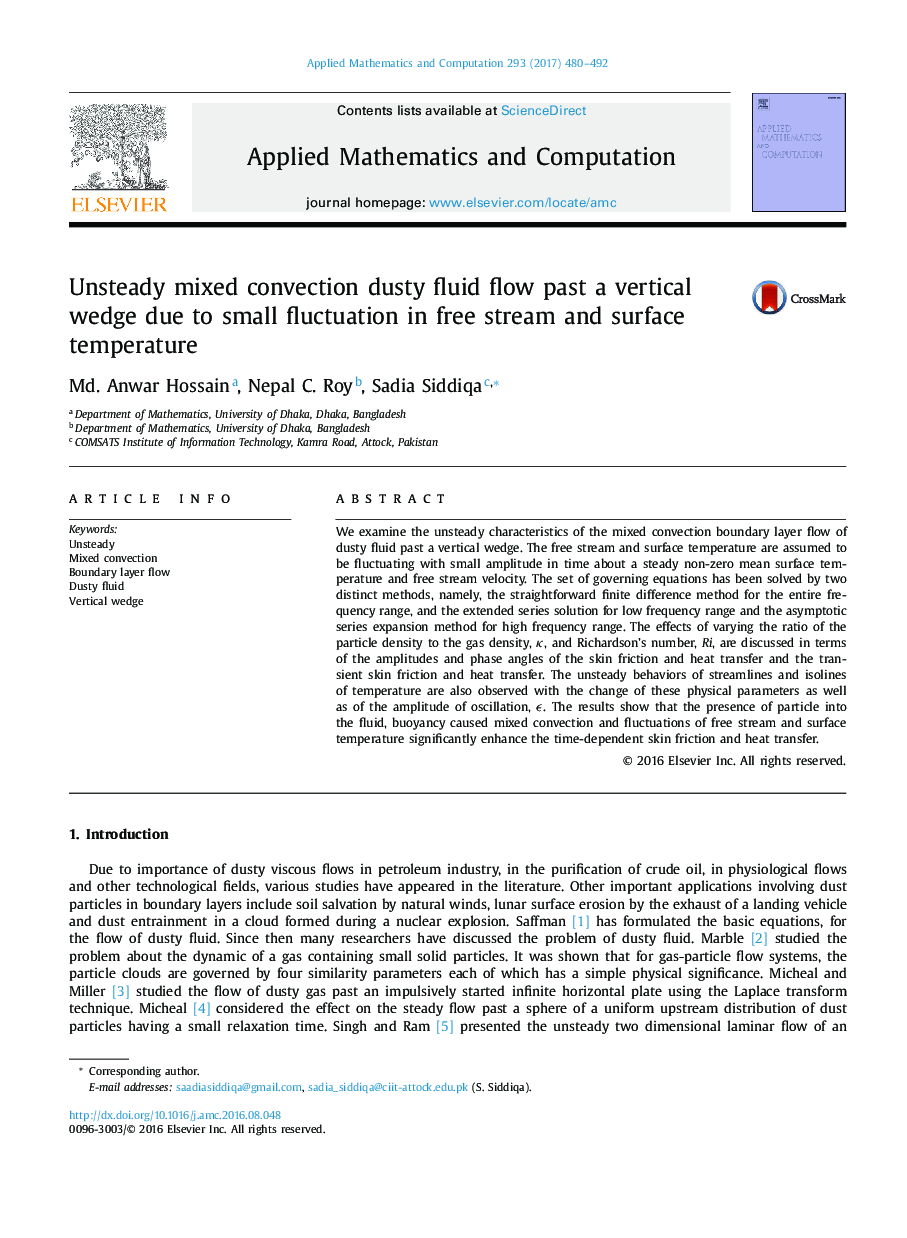| Article ID | Journal | Published Year | Pages | File Type |
|---|---|---|---|---|
| 4625588 | Applied Mathematics and Computation | 2017 | 13 Pages |
We examine the unsteady characteristics of the mixed convection boundary layer flow of dusty fluid past a vertical wedge. The free stream and surface temperature are assumed to be fluctuating with small amplitude in time about a steady non-zero mean surface temperature and free stream velocity. The set of governing equations has been solved by two distinct methods, namely, the straightforward finite difference method for the entire frequency range, and the extended series solution for low frequency range and the asymptotic series expansion method for high frequency range. The effects of varying the ratio of the particle density to the gas density, κ, and Richardson’s number, Ri, are discussed in terms of the amplitudes and phase angles of the skin friction and heat transfer and the transient skin friction and heat transfer. The unsteady behaviors of streamlines and isolines of temperature are also observed with the change of these physical parameters as well as of the amplitude of oscillation, ϵ. The results show that the presence of particle into the fluid, buoyancy caused mixed convection and fluctuations of free stream and surface temperature significantly enhance the time-dependent skin friction and heat transfer.
